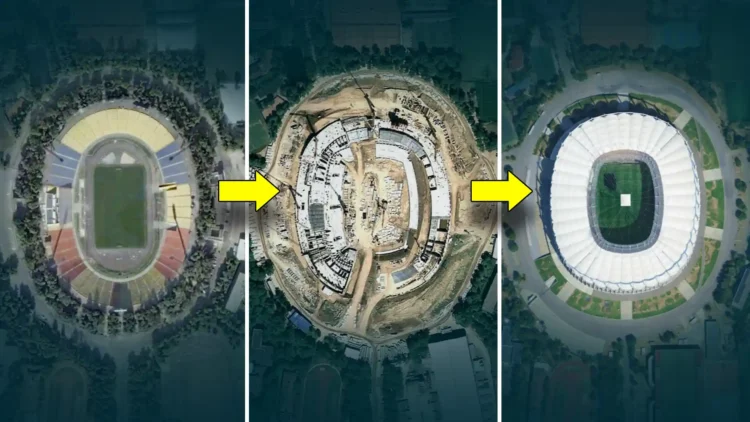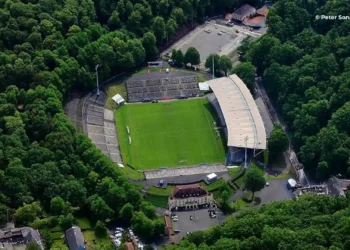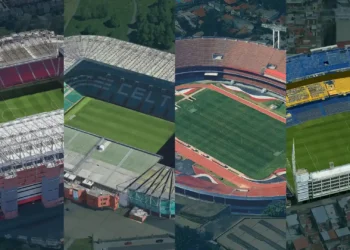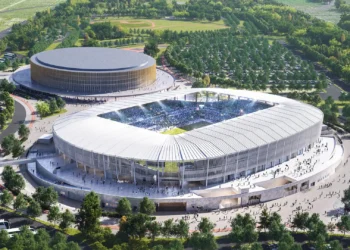Football stadiums are more than concrete and steel — they are memory, identity, culture, and a sense of belonging.
So when the time came for modernization, many clubs faced a difficult question:
Should we build a brand-new stadium somewhere else, or should we rebirth the one we already call home?
In many cases, the answer was powerful:
Stay where the heart beats.
Instead of relocating, these clubs and cities chose to renovate, expand, or completely rebuild their stadiums in the exact same place — preserving the emotional connection with fans while creating state-of-the-art arenas for the future.
Some of them were carefully modernized.
Some were demolished and rebuilt from scratch.
But all of them were reborn on the same sacred ground.
These are the 10 stadium transformations that respected history —
while stepping boldly into the future of football.
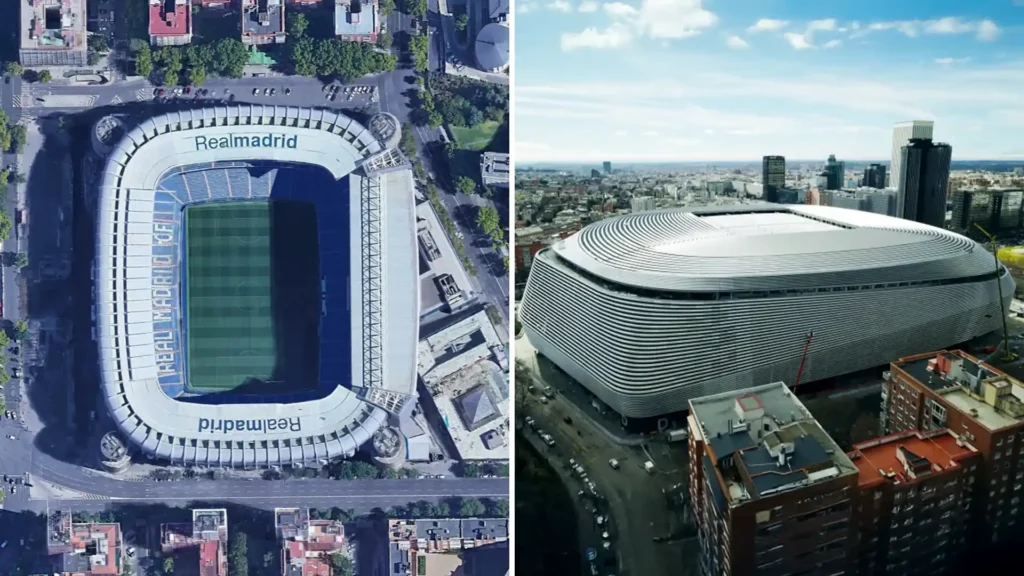
1. Santiago Bernabéu — Madrid, Spain
Club: Real Madrid
Capacity: 84,000
Major Renovation: 2019–2024
Investment: ~€1.3B
Once a traditional concrete bowl, the Bernabéu is now one of the most technologically advanced stadiums on Earth. Its transformation includes:
- A futuristic steel-titanium façade
- Retractable roof & retractable pitch system
- Fully digital 360° interior screen
- Multi-event capability (NFL, concerts, exhibitions)
A stadium that went from historic to hyper-modern — without losing its identity.

2. Spotify Camp Nou — Barcelona, Spain (In Progress)
Club: FC Barcelona
Final Capacity: 105,000
Renovation: 2023–2027
Investment: €1.5B
Camp Nou is being redesigned into a global sports-culture complex, featuring:
- A complete seating bowl renovation
- A full roof cover
- A 360° LED media ring
- Modern hospitality, museums & public squares
The world’s largest football stadium will also become carbon-conscious and energy efficient.
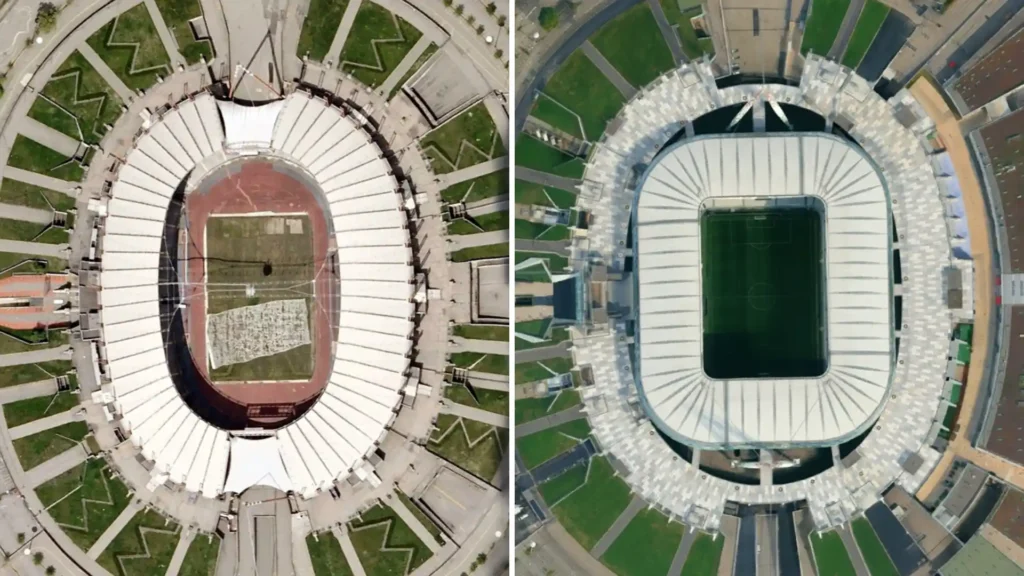
3. Juventus Stadium — Turin, Italy
Club: Juventus
Capacity: 41,507
Opened (after rebuild): 2011
Built on the site of the disliked Stadio Delle Alpi, Juventus created a new model for Europe:
A compact, intimate stadium that puts fans closer to the pitch, amplifies atmosphere, and powers club finances.
This transformation changed Italian stadium culture forever.
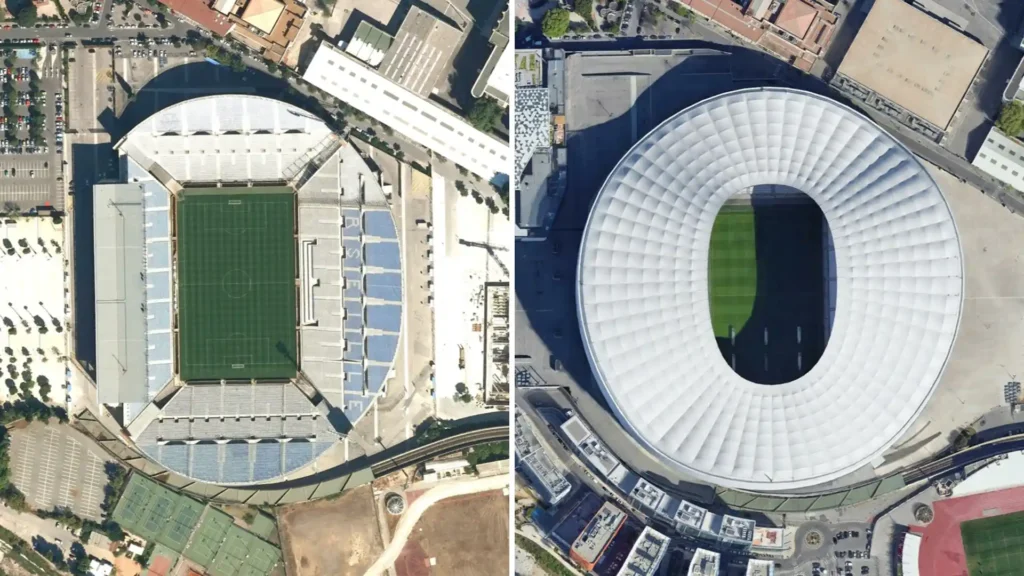
4. Stade Vélodrome — Marseille, France
Club: Olympique Marseille
Capacity: 67,000
Renovation Completed: 2014
Once known for its windy, exposed stands, the Vélodrome received:
- A dramatic sweeping roof structure
- Improved seating comfort
- Major acoustic improvements
Today, it is one of Europe’s loudest and most beautiful stadiums.
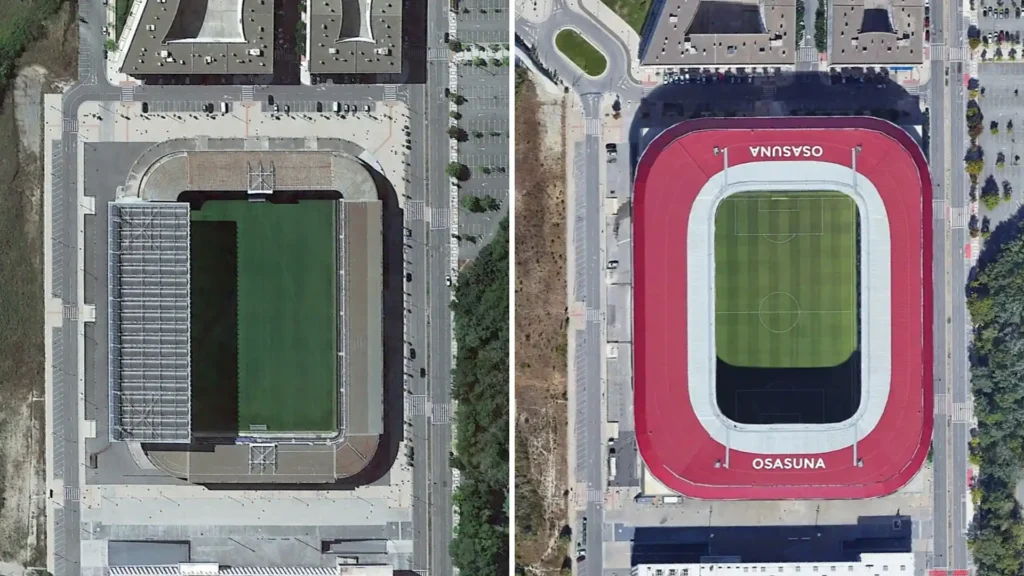
5. Estadio El Sadar (Osasuna Stadium) — Pamplona, Spain
Club: CA Osasuna
Capacity: 23,500
Renovation: 2021
This renovation turned a standard stadium into a fan-designed football fortress.
- Steeper stands
- Improved closeness to pitch
- Vibrant red & modern design
Voted the best stadium renovation in the world

6. Beşiktaş Stadium — Istanbul, Turkey
Club: Beşiktaş JK
Capacity: 41,903
Opened: 2016 (rebuilt on old İnönü site)
A masterpiece that blends modern luxury with historic waterfront identity.
The acoustics are engineered to trap sound, making this one of the loudest stadiums in Europe.
A perfect example of heritage reborn.
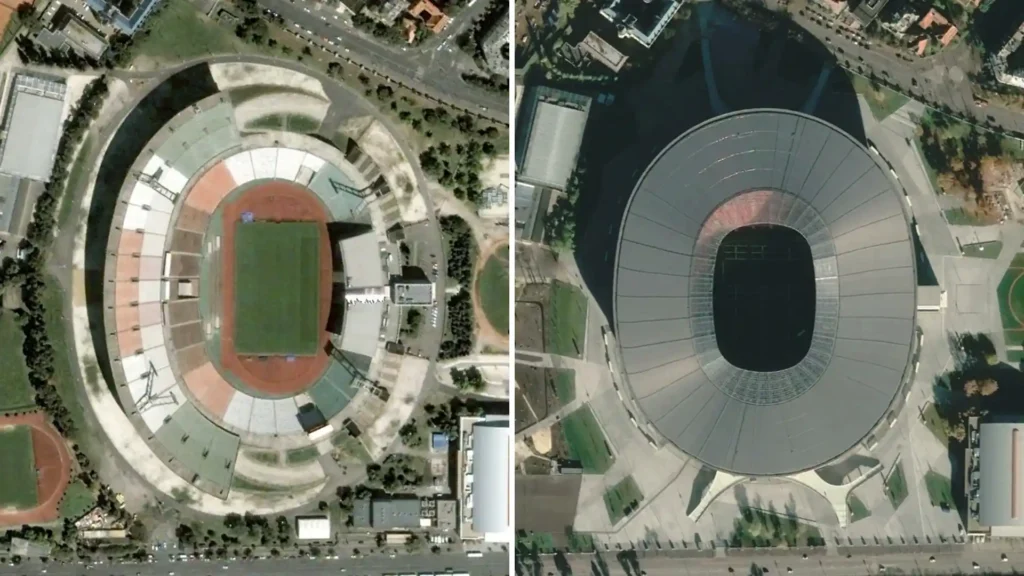
7. Puskás Aréna — Budapest, Hungary
Capacity: 67,215
Opened: 2019 (rebuild of original Puskás Stadium)
This renovation honored the memory of Hungary’s golden era while creating a world-class UEFA and international venue.
Its grand exterior design and excellent acoustics have turned it into a favorite for major finals and concerts.
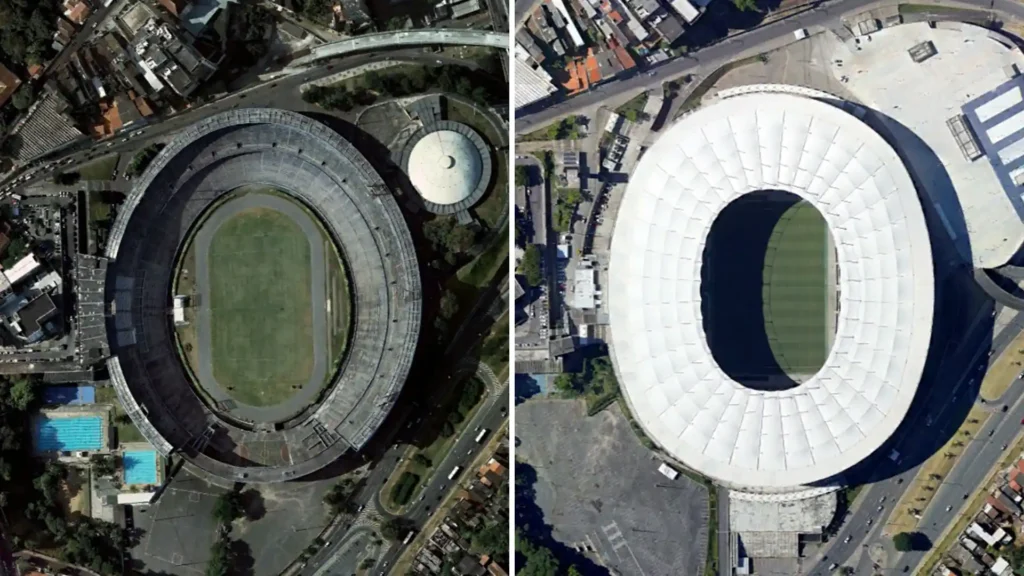
8. Arena Fonte Nova — Salvador, Brazil
Capacity: 48,000
Rebuilt: 2013, ahead of 2014 World Cup
Built in place of a demolished unsafe stadium, the new Arena Fonte Nova features:
- Open horseshoe form with lake views
- Vibrant exterior structure
- Concert & festival adaptability
Its design blends Brazilian culture, football, and urban scenery.
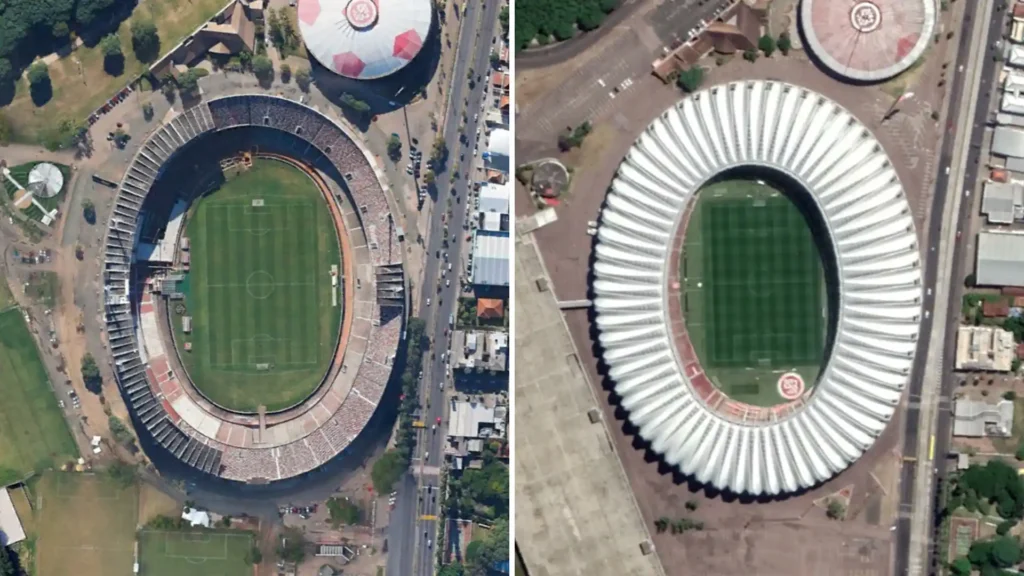
9. Estádio Beira-Rio — Porto Alegre, Brazil
Club: Internacional
Capacity: 51,300
Renovation: 2014
Beira-Rio preserved its historic bowl but added:
- A white tensioned roof
- Updated seating & hospitality
- Modern lighting & façade
A renovation that respected tradition while preparing for the future.
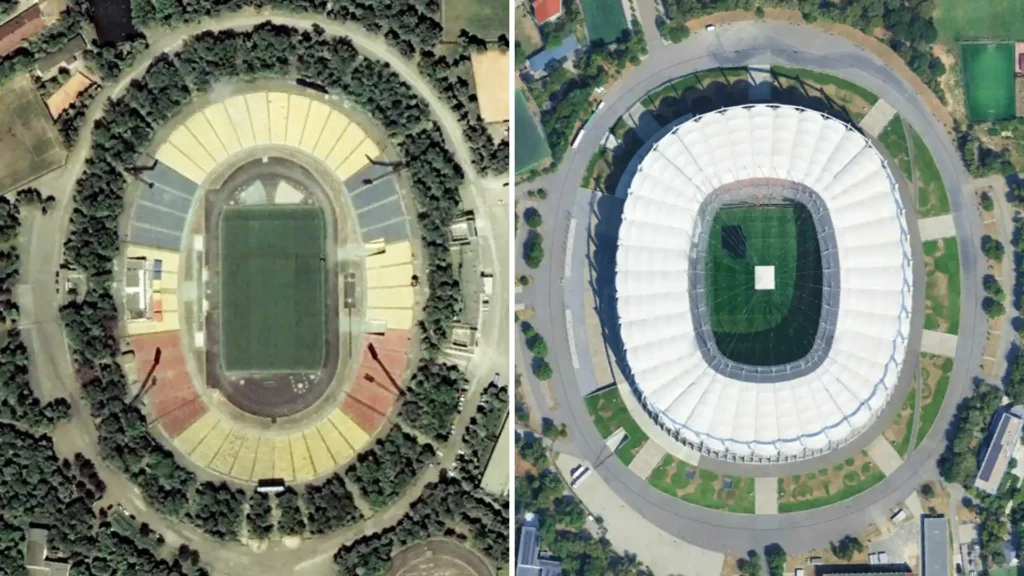
10. National Arena (Arena Națională) — Bucharest, Romania
Capacity: 55,600
Opened (on old site): 2011
This transformation gave Romanian football:
- A retractable roof national stadium
- A clean, modern bowl with excellent acoustics
- Hosting rights for UEFA EURO 2020 matches
It became a symbol of modern Romanian sport.
These stadiums prove that you don’t always need to build new — sometimes the smartest move is to transform, preserve, and elevate what already holds meaning to millions of fans.
Modernization, when done with respect, gives history a future.

